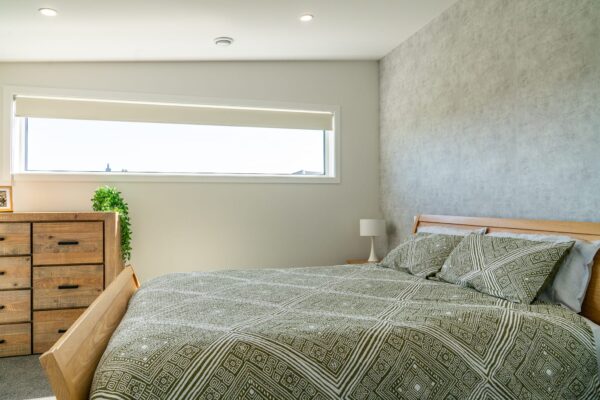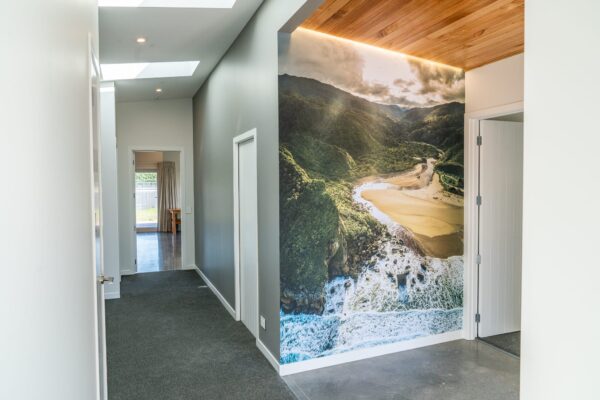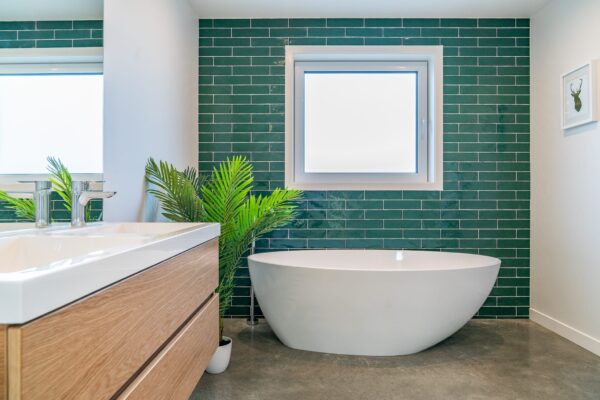Introduction
It has been almost 5 years since we moved into our high performance home. Whilst it is not passive certified, it is designed to passive house principles and underwent energy modelling. This modelling demonstrated it would perform well above the minimum building code and achieve a healthy, comfortable, sustainable, and energy efficient home.
So, what does this mean and has it been worth the extra investment? In short, it has been more than worth it, and we have examples to support this.
We have divided the blog into three parts:
- Health & comfort
- Energy demand and cost
- Practical findings
Health & Comfort (Part 1)
Arguably, health and comfort are the most important benefits of building to passive house principles, but it still must be justifiable financially to the person building, and does theory actually translate into reality?
Passive house design is a whole house approach. The thermal and airtight envelope is the boundary. Everything within this envelope performs in unison to create the optimum indoor living environment – in other words is healthy, comfortable and energy efficient.
Our single storey, four bedroom, 2 living home is all of the above. The entire home, 5 years on, still performs as it should. We only need to return home after a stint away to really appreciate the health & comfort benefits of our home.
How has day to day living changed in a passive house?
Whole House Comfort
Every room is used throughout the day, year-round. We do not have to add or remove layers of clothes, none of us own slippers, and we do not have to manually adjust heating every day.
We may boost the MHRV after a marathon teenage hot shower or we may turn on the air conditioning on a particularly hot day, but it is minimal. In the winter months, the heat pump is automatically set to turn on if temperatures drop below 22 inside so little manual intervention is needed here either.
Barefoot & Care Free
There is negligible difference between winter and summer shower experiences. We pad barefoot into the bathroom year round, no heater or extractor fan direct to the outside is required, we don’t delay getting out of the shower as its cold, we don’t need to demist the mirror, and there is no damp bathroom smell. We do have a heated towel rail, but it is not needed – just a ‘nice to have’ (warm fluffy towels).
Draught Free Throughout
Many of our sofas are adjacent to windows. Normally this may be an issue if you need to pull the curtains to keep the heat in, but not so in a passive house. We do close some for privacy from time to time. There are no draughts or cold spots around windows or corners of the home which are generally thermal bridges in standard construction.
Draughts often form where there is a temperature difference as warm air moves towards colder air. As both surface and air temperatures remain close and constant in a passive house this does not occur, so those window seats are perfect for a late-night reading or TV session.
Asthma Free
My asthma has continued to remain at bay 5 years on whilst sleeping in a passive house. However, I must take my inhaler whenever I stay away overnight as symptoms reappear.
The filters in the MHRV manage the quality of the incoming air, and together with the controlled humidity and no mould, play a huge part in my asthma management. I am not alone. Our very first certified passive house was for a family with a daughter with more serious symptoms – she also noticed a huge difference. It is no surprise that the Asthma Foundation NZ is a key supporter of passive homes.
These are just a few examples. If you would like to discuss our experience living in a passive house further, please feel free to contact us or visit our show home in Amberley to experience the feel of such a house for yourself.
Next week our blog describes how our home has performed with our teenage family, in terms of energy demand and costs.














